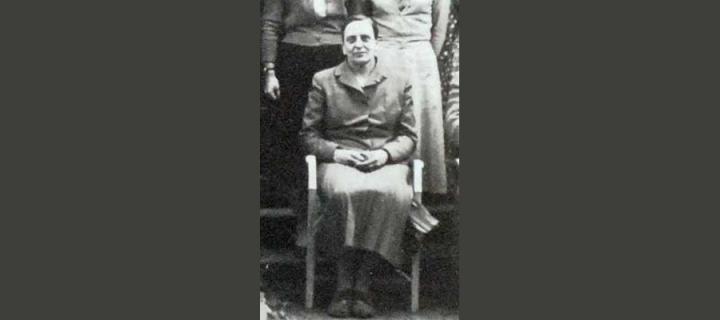Marion Ross (1903 – 1994)
Scottish physicist and pioneer in X-rays and superconductivity.

Born in Edinburgh on 9 April 1903, Marion Amelia Spence Ross was one of five daughters of William Baird Ross, an organist and composer, and Marion Thomson. The family lived in the New Town’s Royal Crescent.
After schooling at Edinburgh Ladies College, Ross studied mathematics and natural philosophy at the University of Edinburgh, receiving prestigious bursaries in mathematics during her first and second years. She graduated with honours in 1925.
Early career
MA degree in hand, Ross moved to Cambridge to train as a teacher before working at a secondary school for girls in Woking, Surrey.
She returned to Edinburgh to take up the post of assistant lecturer in the Department of Natural Philosophy in 1928. Among teaching duties, she devised a course on acoustics for students of music.
Crystal structure
Looking to widen her experience, Ross wrote to Professor William Lawrence Bragg (Nobel Prize in Physics 1915) at the University of Manchester, which led to her spending a year working in crystallography with C Arnold Beevers.
In 1937 the pair published a paper on the crystal structure of beta-alumina in a German journal, describing an anomaly caused by the presence of mobile sodium ions. The research launched further investigations and it was later discovered that these ions made the crystal an efficient superconductor. The location of these ions are now known as Beevers-Ross or anti-Beevers-Ross sites as a tribute to the pair’s initial discovery.
X-rays
Back at Edinburgh, Ross undertook research with Edinburgh’s first Nobel Laureate Professor Charles Glover Barkla, looking into the scattering of X-rays by light atoms. She was awarded a PhD in July 1943 for her thesis on this topic.
Wartime research
During World War Two, Ross spent a year teaching mathematics at Falkirk Technical School, before working for the Admiralty at Rosyth for four years. She researched underwater acoustics and hydrodynamics and was made head of the research group. During this time she developed an interest in fluid flows.
First director
Ross returned to the University as a lecturer after the war. She set up a laboratory to study beta-ray spectra and later high energy particle spectra. During her time with the group she supervised ten doctoral students.
On 5 March 1951, Ross was elected a Fellow of the Royal Society of Edinburgh, two years after the first women were admitted.
Returning to her interest in fluid flows, she set up the Fluid Dynamics Unit at the University of Edinburgh and became its first director.
Beyond academic duties, Ross contributed to the University community by serving on the University Court for the session 1967-68. She was one of the first non-professorial members of staff to be elected.
Remembered
On her retirement, the Marion A S Ross Prize was founded in her name. It is awarded annually to a student entering the final year of undergraduate study in physics.
Dr Ross, reader emerita, died on 3 January 1994 in Edinburgh.
In 2014 a road in the King’s Buildings campus was named in her honour. It runs between Christina Miller Building and Roger Land Building.
Sources
Obituary on the Royal Society of Edinburgh website (external link)
Biographical account on the Saltire Society website (external link)
Biographical account on the Undiscovered Scotland website (external link)
Article on the Equality and Diversity website

